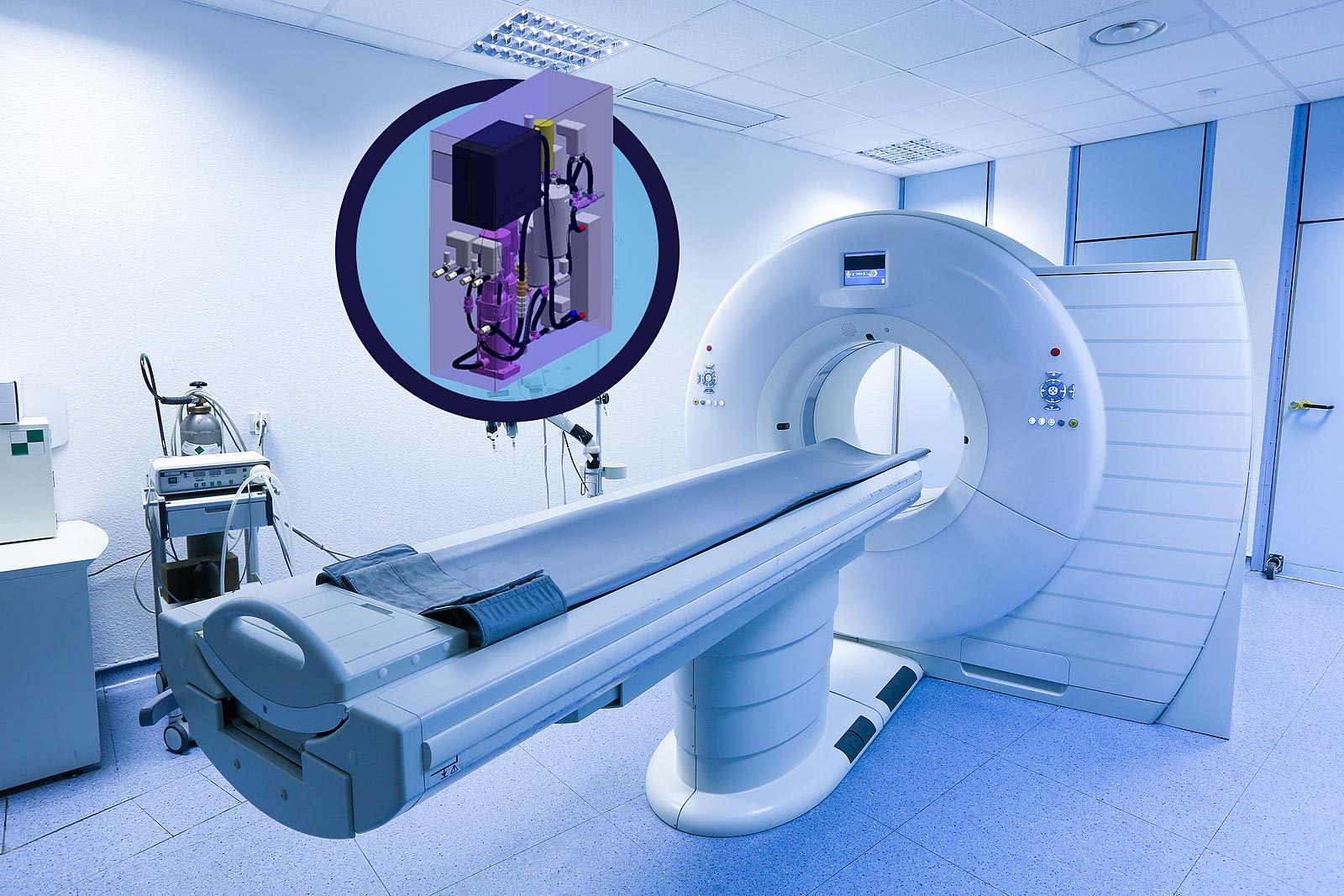Laird’s custom liquid cooling systems offer superior heat pumping capability with lower power consumption, noise, weight and footprint compared to competing technologies…
October 26, 2017 – Laird Thermal Systems delivers custom, self-contained liquid cooling systems that provide precise temperature control in medical imaging equipment like CT Scanners, PET Scanners and MRI Scanners. Liquid cooling systems provide a high coefficient of performance (COP) that ensures efficient, low power operation to maximize uptime and optimize performance of medical imaging equipment. When compared to compressor-based systems, standard and custom liquid cooling systems offer high heat pumping and high heat flux density with quieter operation — all in a smaller and lighter system.
Medical imaging systems provide detailed pictures on the structure of a body in multiple topographies. Detailed contrasts are visible between the different soft tissues and are useful in neurological, cardiovascular and oncological analysis. CT and PET scanners use ion radiation created by X-rays to capture topographical images, while MRI equipment use magnetic and radio frequency fields. Temperature stability is vital in medical imaging equipment, as operating temperature fluctuations in these machines can significantly affect the image quality and resolution.
In CT, PET and other X-ray based imaging techniques, X-ray tubes in gantry systems generate a large amount of heat. The heat load range can be as much as 5KW. As a result, liquid cooling systems are often the preferred choice to move the heat away from X-ray tube to ensure quality images are produced. MRI machines work by generating a very large magnetic field using a super conducting magnet and many coils of wires through which a current is passed. Maintaining a large magnetic field needs a lot of energy, generating significant amounts of heat. Laird’s liquid cooling systems combine high heat pumping capacity and superior heat routing with minimum power consumption.
In addition, components in these gantry systems are subject to tremendous rotational speeds and acceleration forces (G-forces). With Laird’s proprietary spindle screw pump technology, pressure changes have little impact on the liquid cooling systems performance, as the pump easily moves fluids of higher viscosity without losing flow rate. Laird’s liquid cooling systems with spindle screw pumps maintain constant flow and pressure while under high G-force stress, ensuring proper performance under these demanding medical imaging conditions.
“Temperature stability within medical imaging systems is critical to enhance imaging performance, increase system reliability, and maximize equipment uptime. Medical imaging systems require conflicting requirements of increased heat pumping performance with lower power consumption. Compared to conventional air heat transfer mechanisms, our liquid cooling systems offer cooling up to 5X higher per square area,” said Anders Kottenauer, Senior Vice President of Laird's Engineered Thermal Systems Business. “The efficiency of liquid cooling systems optimizes heat transfer to deliver superior thermal management that limits dissipation of heat to nearby sensitive electronics.”
Laird’s liquid cooling systems offers high thermal conductivity of coolants to remove bulk heat in Kilowatts with rapid cool down. Liquid cooling systems recirculate coolant to a predefined set-point temperature, while dissipating the large amount of heat generated in the densely packed electronic environment. A liquid cooling system offers higher efficiency than air-based heat exchangers and provides more rapid cooling, quieter operation, higher reliability, and increased system uptime.
For more information about Laird’s cooling solutions for medical imaging systems, visit https://www.lairdthermal.com/applications/medical-imaging
For more information about Laird’s standard and custom liquid cooling systems, visit https://www.lairdthermal.com/products/liquid-cooling-systems

